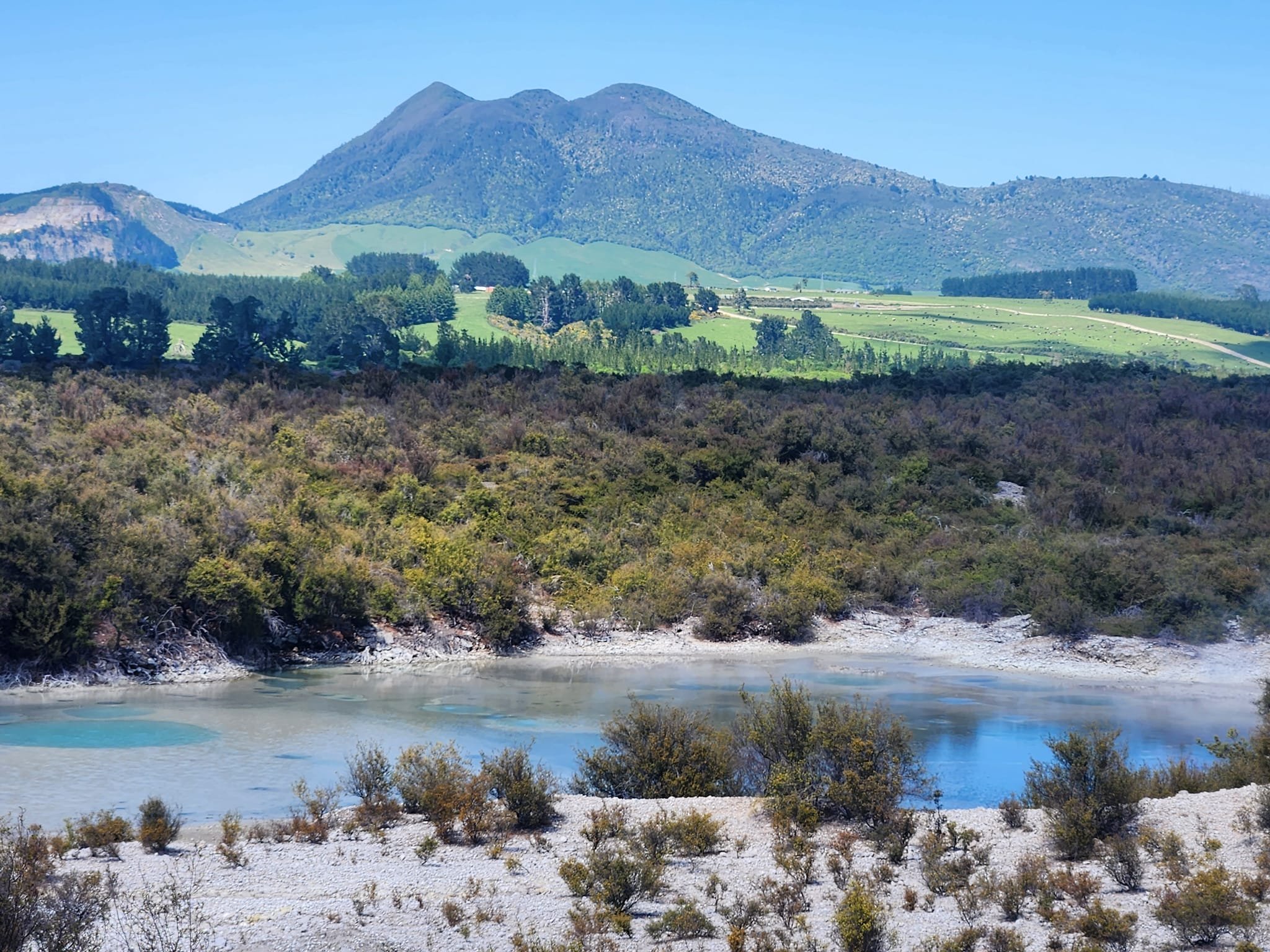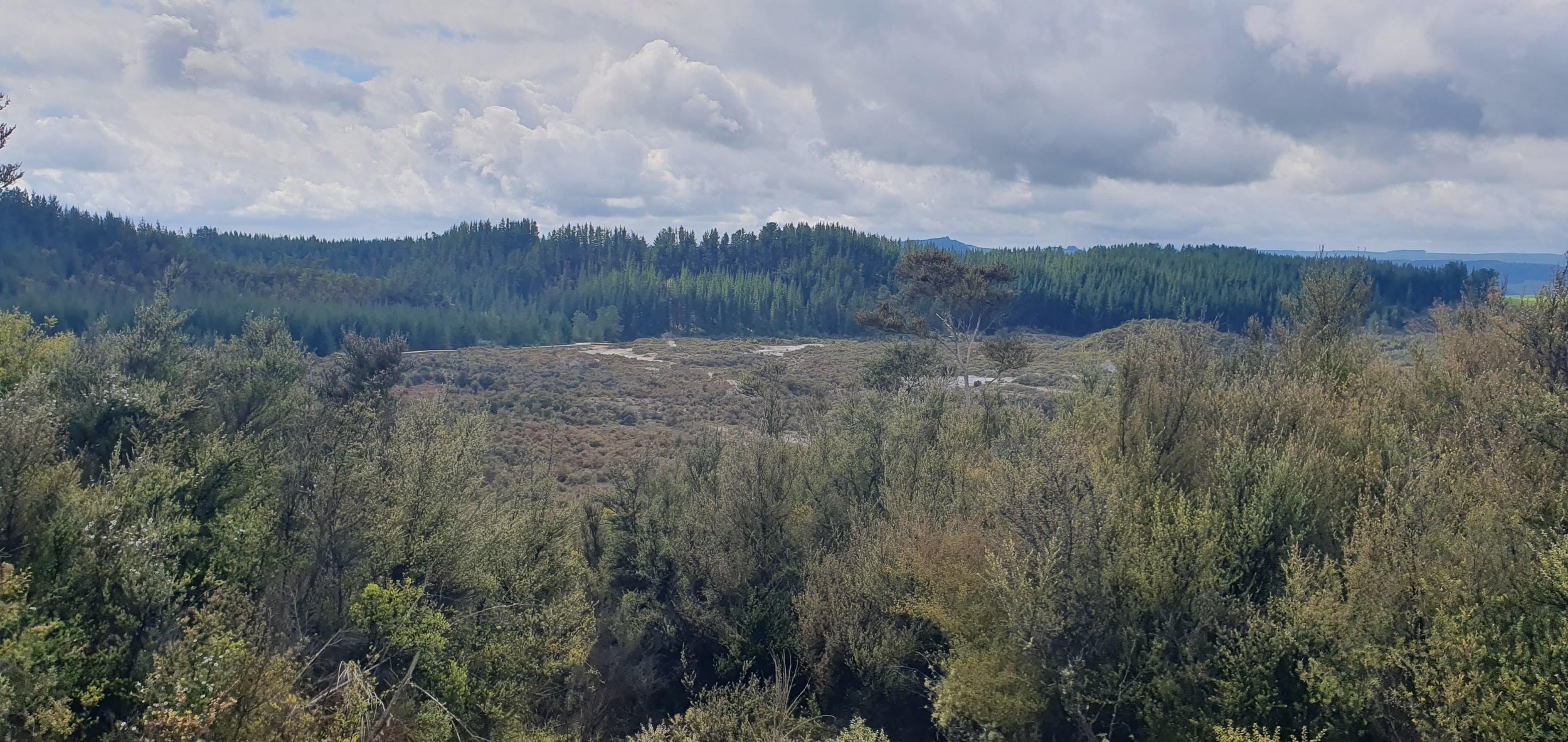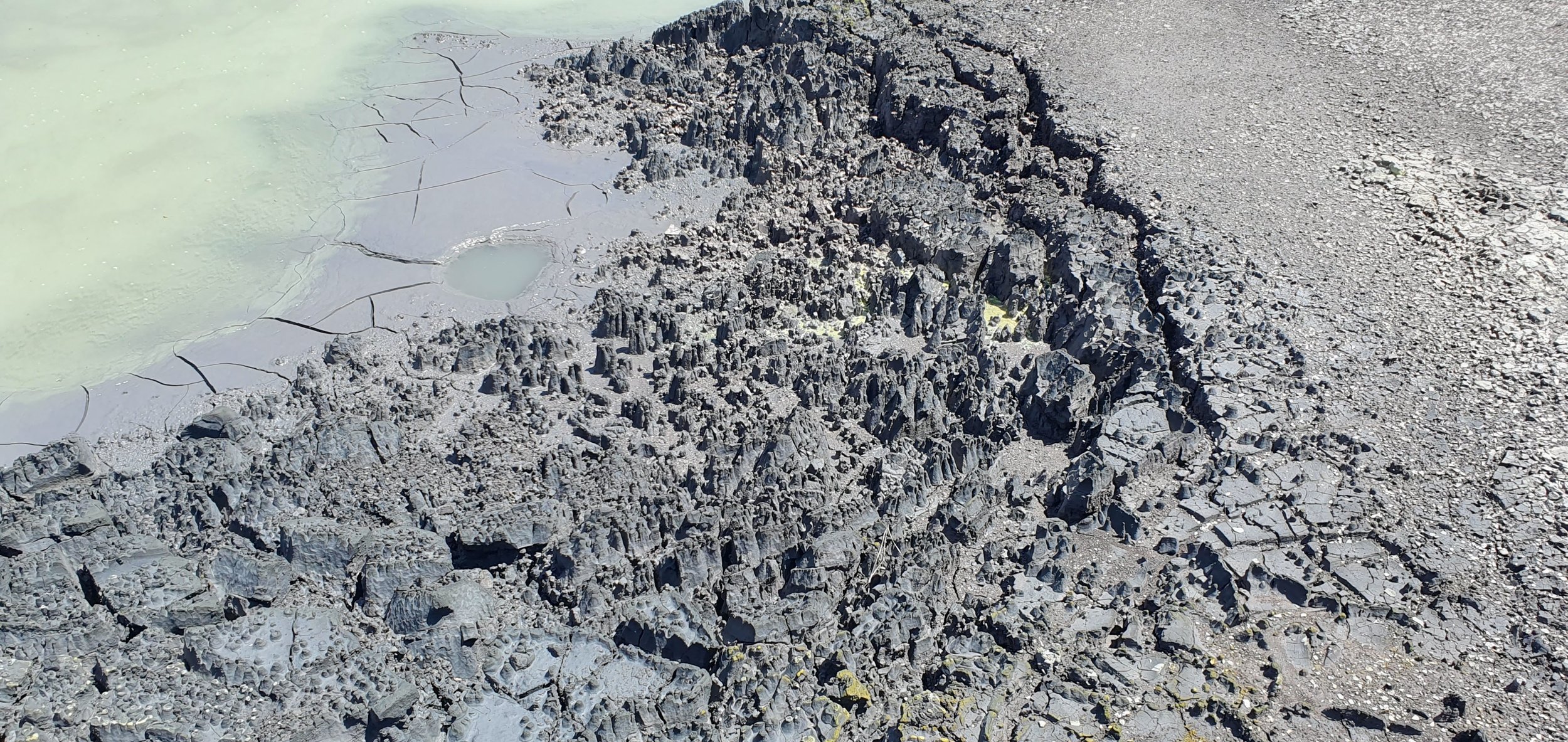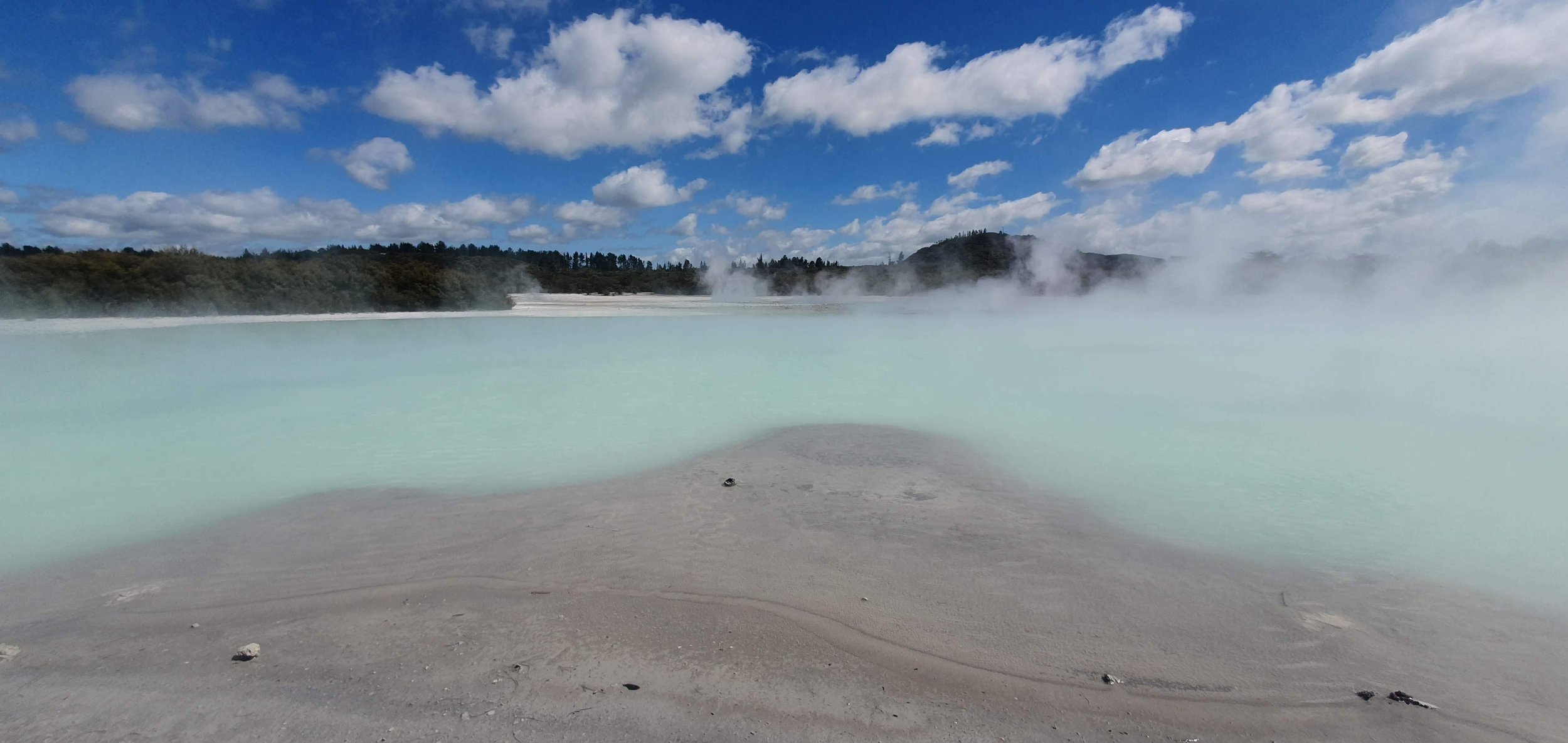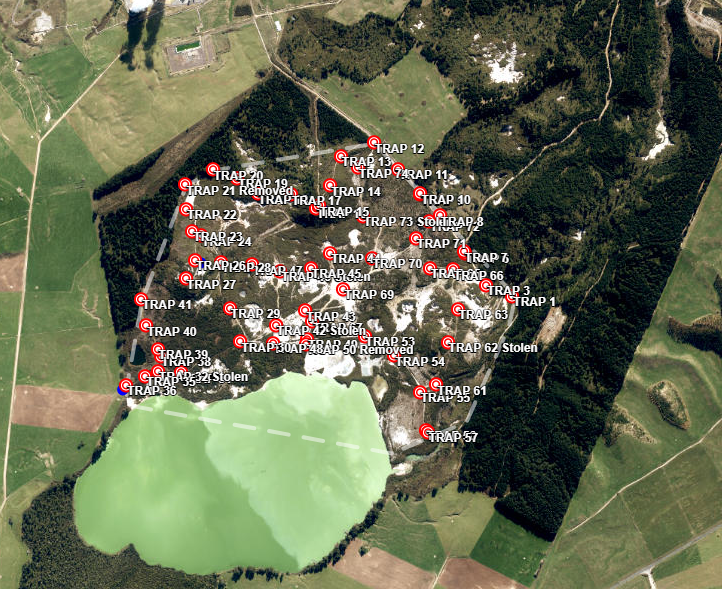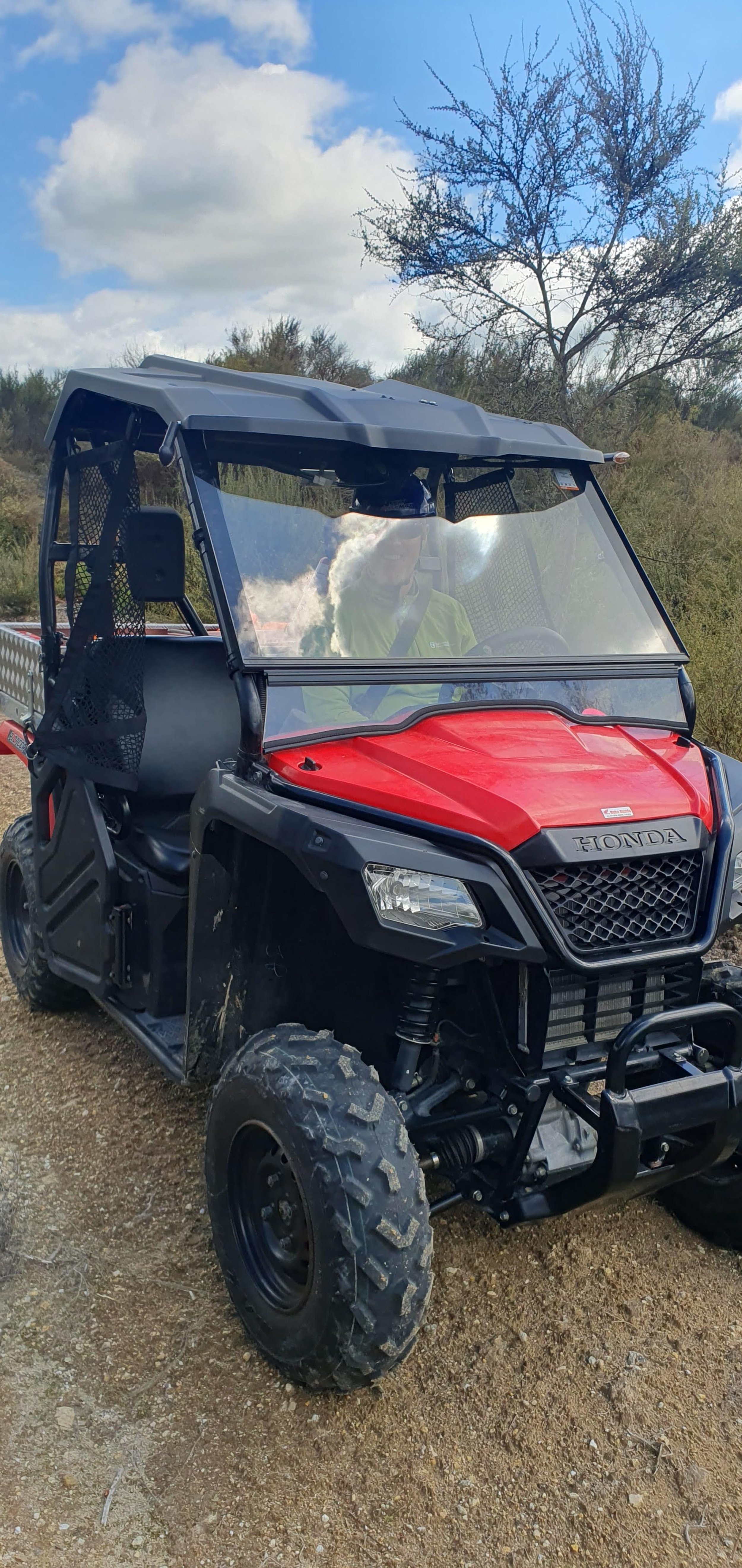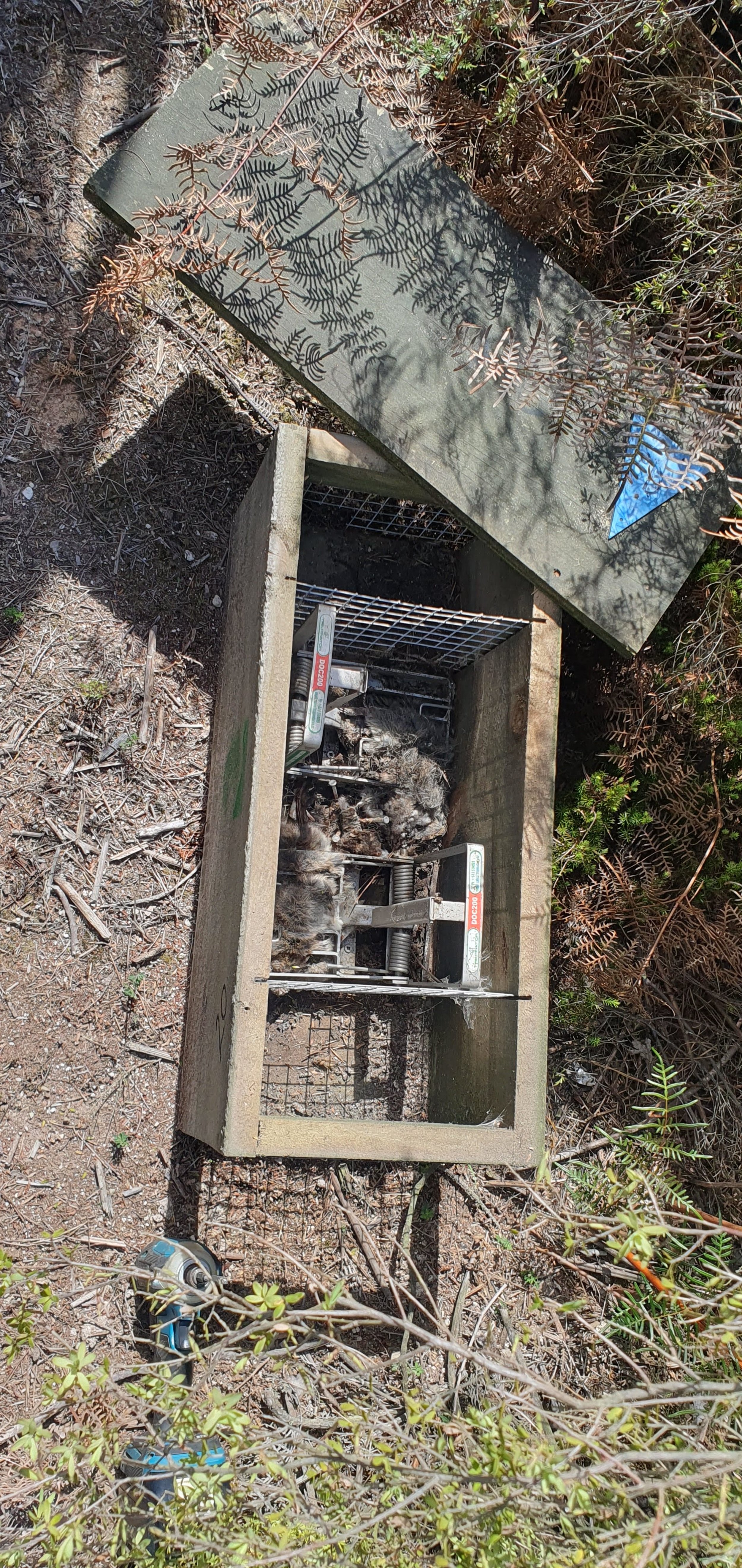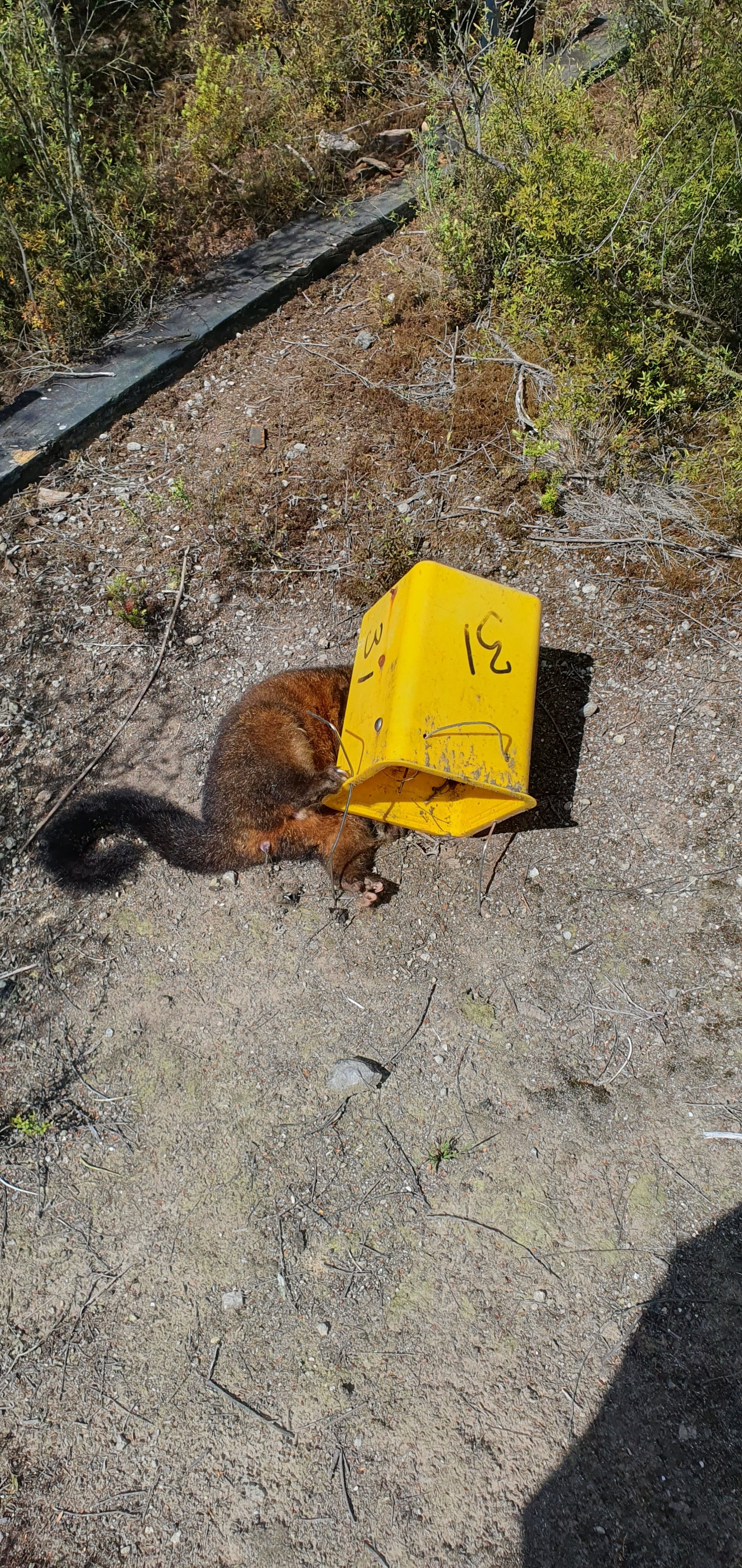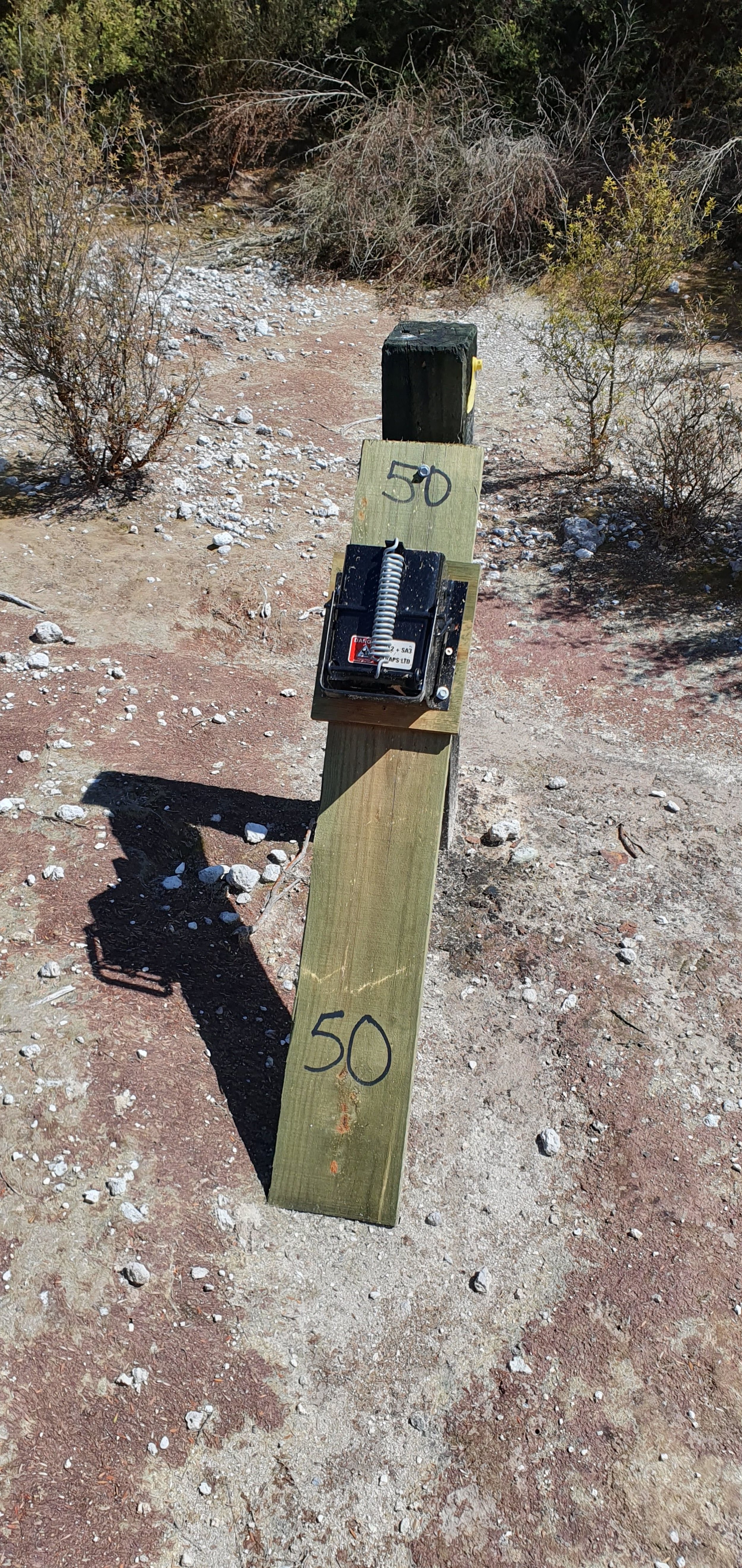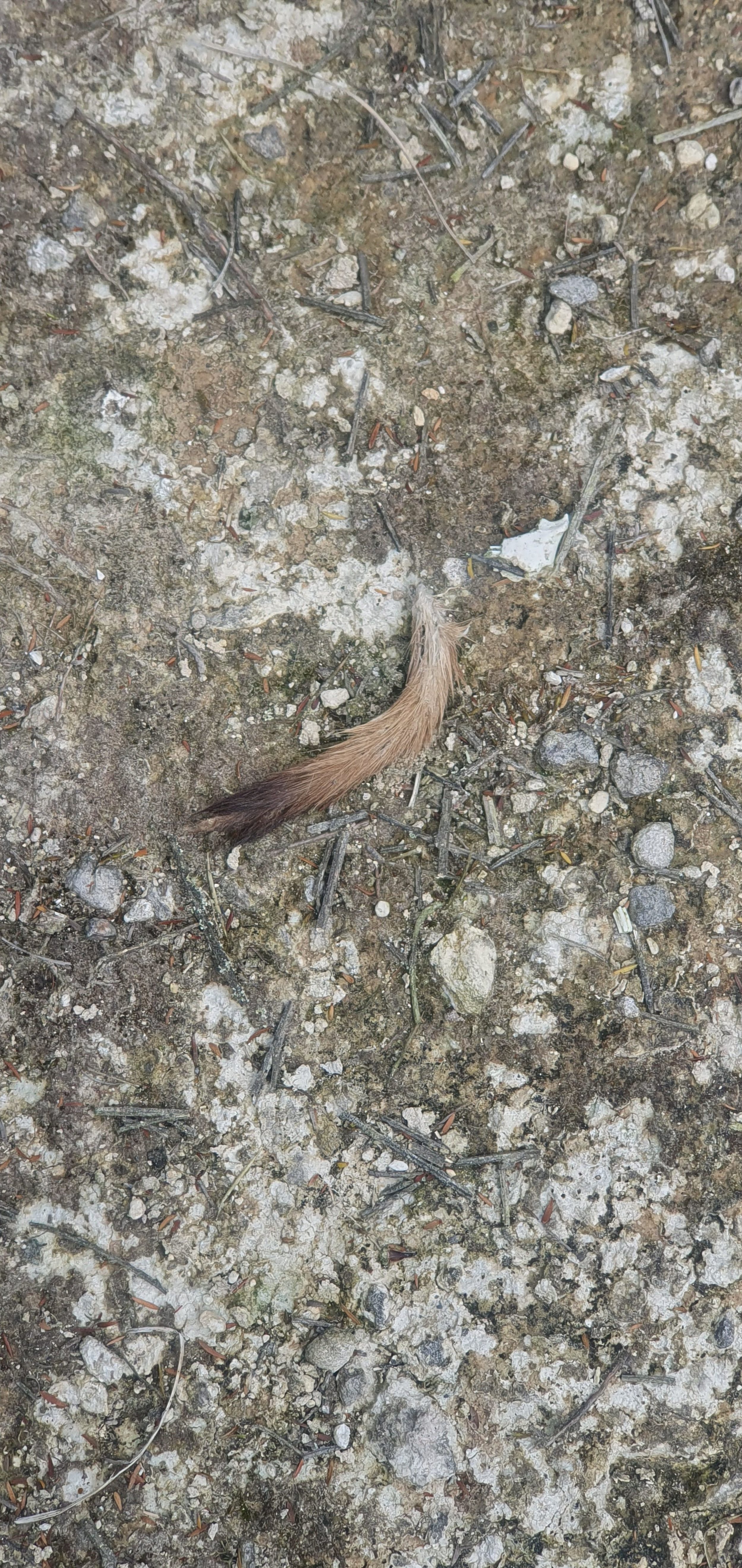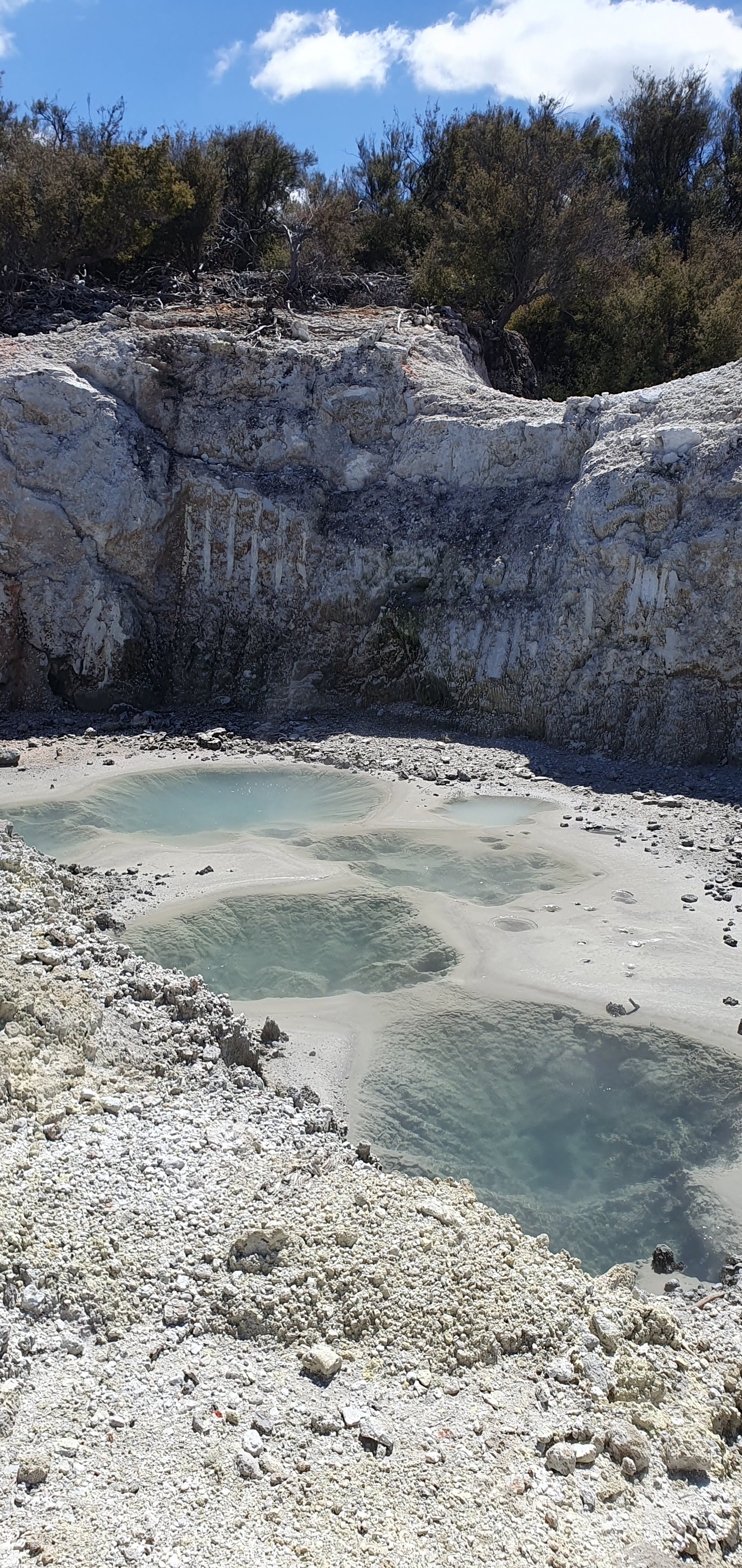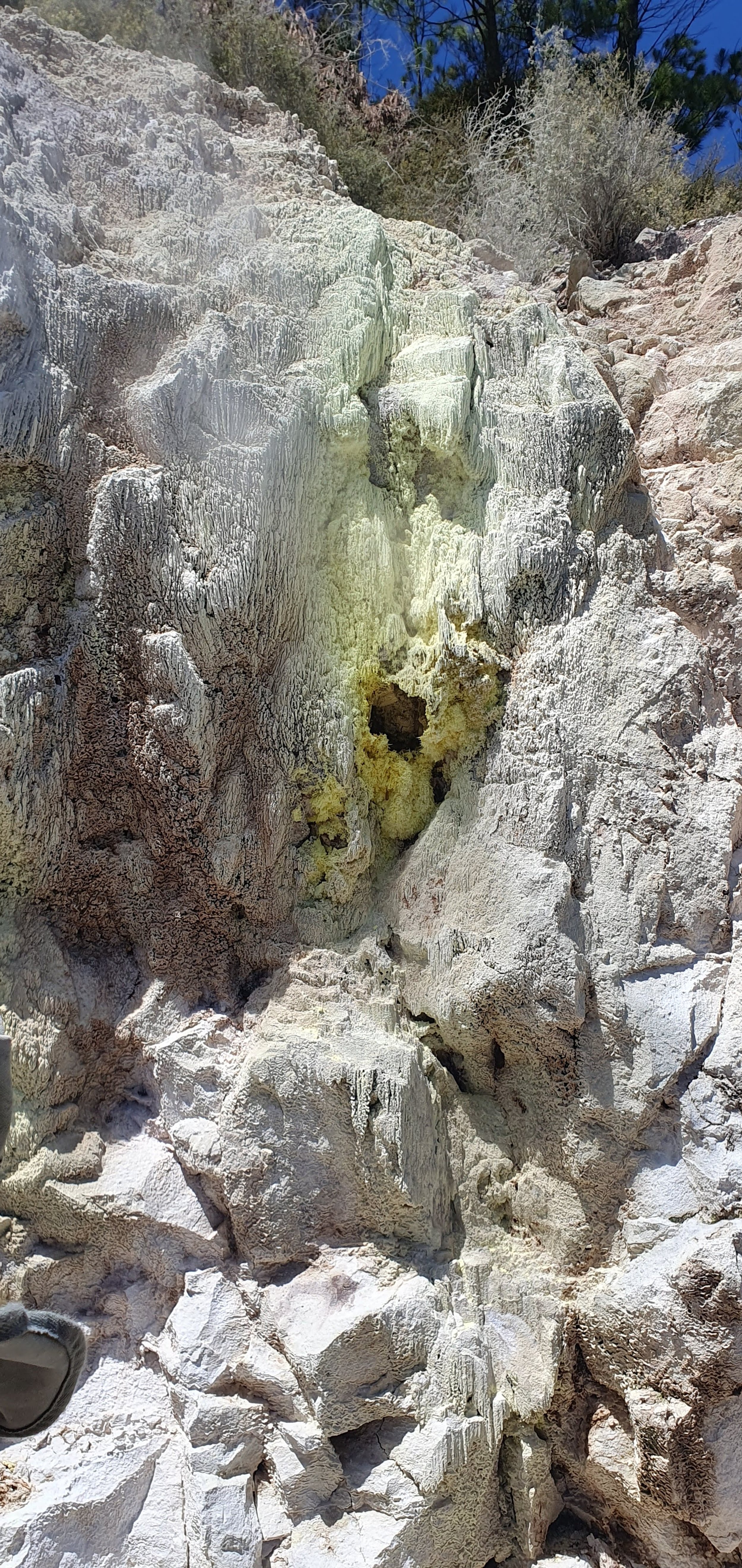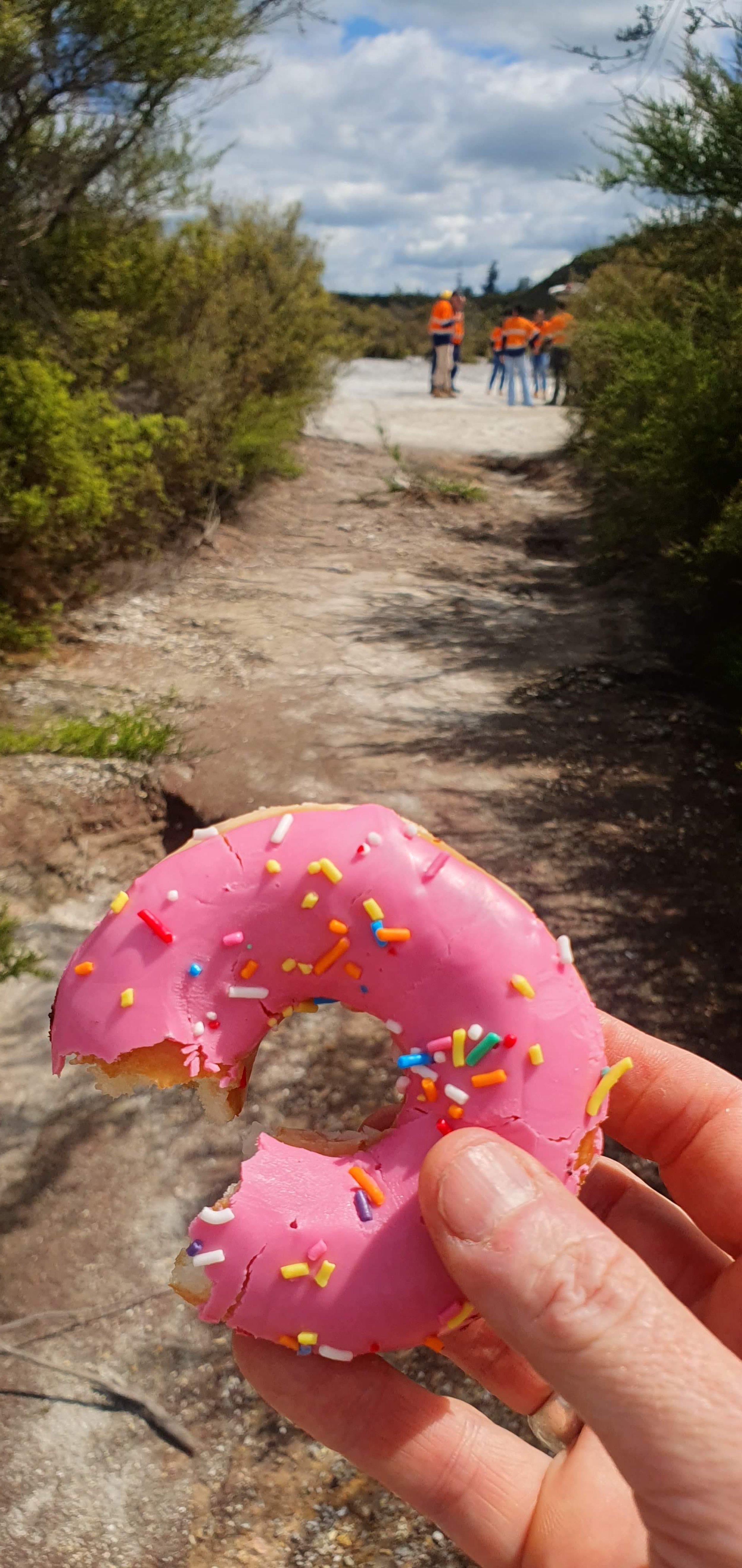Trapping at Rotokawa
Before heading off for the Christmas holidays, I got the chance to tag along with Department of Conservation staff Johno and Mike to help out with servicing the pest traps around Lake Rotokawa.
The area has a fascinating history of sulphur mining from the 1960s to the 1980s and, more recently, geothermal research and energy production. Despite heavy modifications, Lake Rotokawa remains impressive and the surrounding geothermal features are stunning, with a diverse range of geothermal habitats such as fumaroles and geothermally heated dry grounds. The Reserve is of great significance to Ngati Tahu – Ngati Whaoa. After the mining ceased, DOC took over management and initiated a major rehabilitation programme primarily focused on ongoing weed control. The area is recovering, and there is now an abundance of geothermal vegetation. In 2018, traps were installed to target possums, cats, and mustelids to protect the native flora and fauna. New Zealand dotterels and Black Billed Gulls have been recorded nesting here, both of which are at-risk species. All conservation work has been made possible with mitigation funding from Mercury.
There are 60 traps throughout the area. Trap types include Timms, double and single-set DOC 200s and Steve Allen. The area is particularly hard on the materials and the majority of traps have had to be replaced due to corrosion caused by the geothermal environment. Traps get serviced monthly, and stoats, rats, hedgehogs, possums and cats have all been caught, a total of 171 pests recorded on TrapNZ over 3 years (DOC recently started using TrapNZ to record trapping data so all the trap catch data from Rotokawa has not been transferred over yet from the previous platform.). On this particular day, we got three rats, a possum saw some pig tracks and we refreshed all the traps.
A surprise of the day was being offered morning tea (a doughnut) in the middle of nowhere by team Mercury. They were doing some training and had some spare doughnuts to give away. Fantastic and yum!

